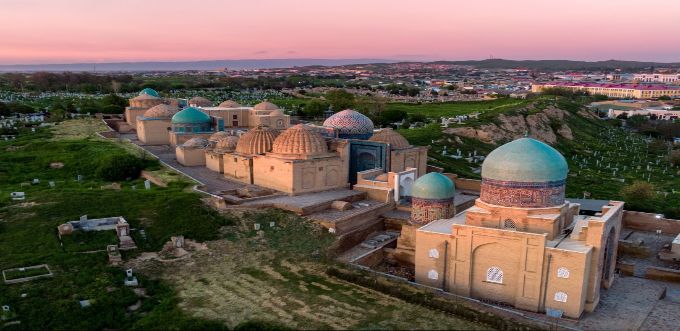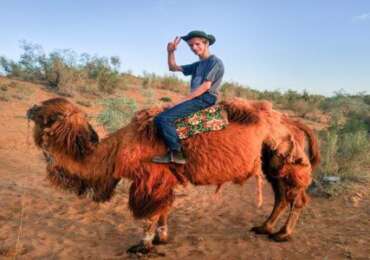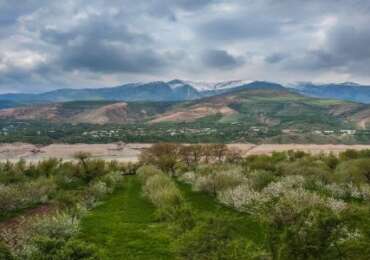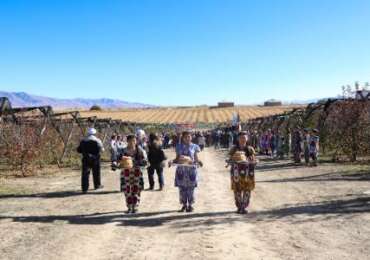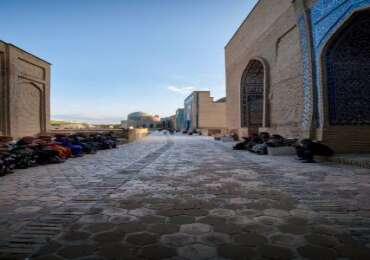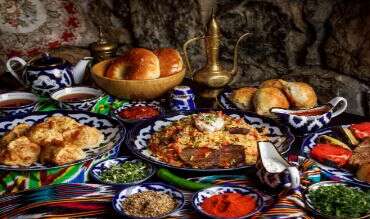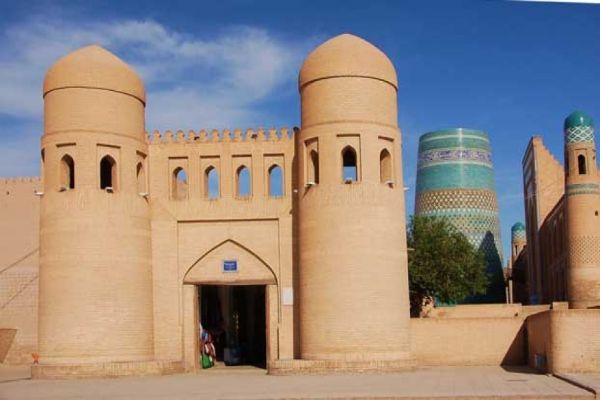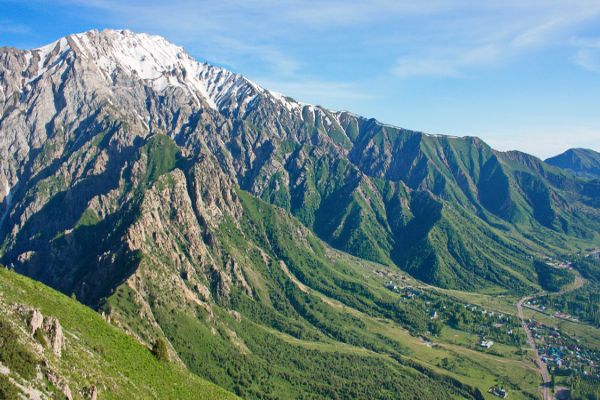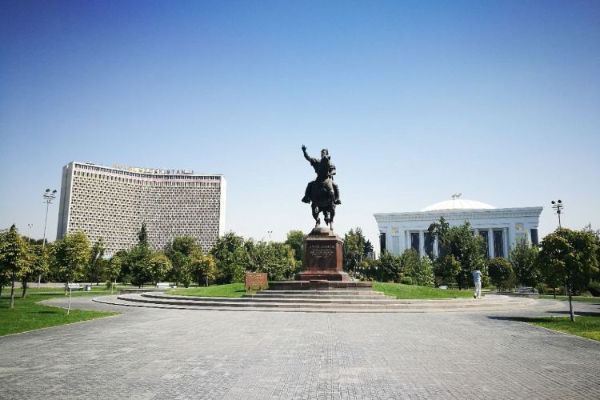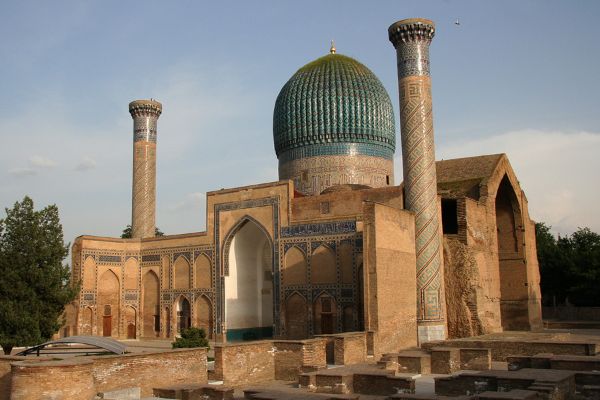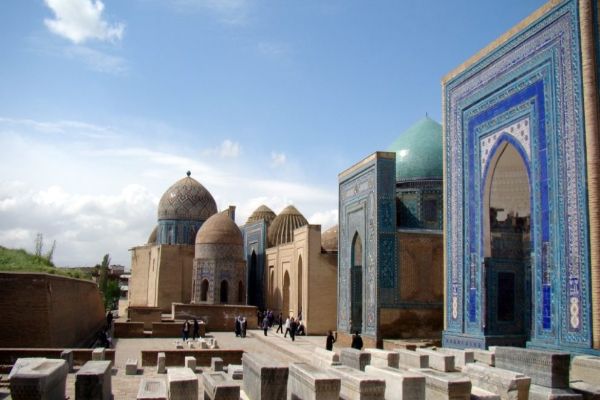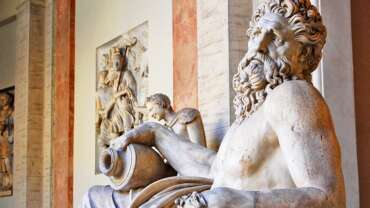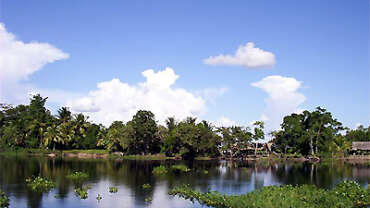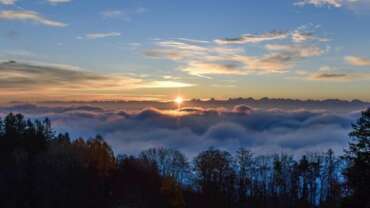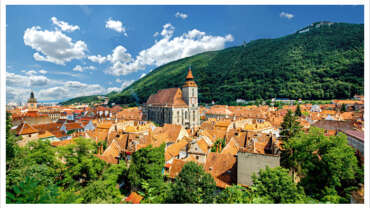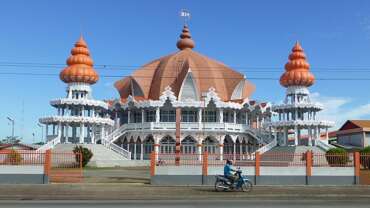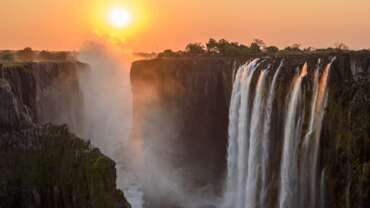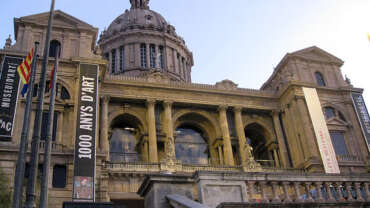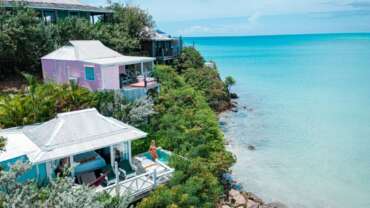Uzbekistan - Naturally Irresistible!
Interesting facts about UzbekistanLocated in the heart of the Central Asia, the Republic of Uzbekistan is famous for its numerous architectural monuments, incredible natural landscapes, magnificent palaces, and ruins of fortresses of past civilizations, outstanding cultural events, gastronomic delights and famous craft workshops. From the first visit, our country evokes extraordinary feelings that prompt us to come here repeatedly.
The Republic of Uzbekistan includes 12 regions and the autonomous Republic of Karakalpakstan.Each corner of Uzbekistan attracts with its features. In Tashkent, you can take a walk in the most beautiful metro in the world or see the most ancient manuscript – the Koran of Usman. In the historical cities included in the UNESCO Cultural Heritage List – Samarkand, Bukhara, Shakhrisabz and Khiva, you can visit the most ancient architectural monuments that have preserved echoes of past eras.
In the southernmost part of the country – Surkhandarya, you can travel through mountain gorges or see the ruins of the ancient cities near Termez.Depending on the time of year, you can go skiing in the foothills of the Tien Shan or climb the highest point of Big Chimgan.
Explore Opulent Routes’ Exquisite Uzbekistan Tours
Opulent Routes invites you to uncover the hidden treasures of Uzbekistan through our bespoke tours, meticulously designed to immerse you in the splendor of this Central Asian gem. Embark on a cultural odyssey through ancient cities, bustling markets, and architectural wonders that narrate the tales of bygone eras.
Delve into the allure of Samarkand, where the Registan Square’s grandeur captivates with its intricate mosaics and towering minarets. Traverse the narrow streets of Bukhara, adorned with ornate palaces and vibrant souks, resonating with the echoes of silk traders from centuries past.
Our Uzbekistan tours are crafted with precision to offer you a glimpse into the soul of this historically rich land. Indulge in the flavors of local delicacies, wander through UNESCO World Heritage sites, and engage with hospitable locals whose warmth adds depth to your cultural immersion.
Opulent Routes ensures a seamless experience, providing expert guides versed in the region’s history and customs. Rest in handpicked accommodations that blend luxury with authenticity, allowing you to rejuvenate for the next day’s adventures.
Let Opulent Routes be your gateway to the enchanting world of Uzbekistan, where every moment unveils a new layer of beauty and history, creating memories that linger long after your journey ends.
Book your personalized Uzbekistan tour with Opulent Routes and embark on a voyage of discovery unlike any other.
History of Uzbekistan
The Uzbek ethnic group proved to be one of the oldest on our planet. The distinctive culture of Uzbekistan has begun to develop at the dawn of civilizations and has undergone significant changes over millennia.
The territory of Uzbekistan is located in the centre of the Central Asia between the two rivers Syr Darya and Amu Darya. Unsurprisingly, an oasis in the middle of the desert has always attracted the brave and ambitious merchants, warriors, adventurers and travelers.
The Achaemenid Empire (the First Persian Empire) prospered here in the VI-IV centuries BC. The Empire dissolved, when Alexander the Great had invaded the territory. The Hellenistic era began. At that time, trade began to develop, large cities began to grow, and the Greco-Bactrian Kingdom began to rule.
In the middle of the 2nd century BC the Greco-Bactrian Kingdom collapsed and a new part of history set in. The nomadic Kushan tribe founded the Kushan state. At this time, trade, movement of people and interethnic communication began to develop.
Due to the advantageous territorial location of cities, the route of the Great Silk Road passed through the territory of modern Uzbekistan. Large trade cities such as Andijan, Kokand, Rishtan, Samarkand, Bukhara, Khiva, and Tashkent appeared and grew along this route.
Then such countries as the Parthian Empire, Kangju, the Hephthalites Empire, and the Turkic Khaganate prospered and developed here. In the VII century AD the Arabs conquered the territory. The territory began to be called Mawarannahr.
In the XII century, Genghis Khan conquered this territory and founded the Chagatai ulus here. However, the heyday of this territory began in the XIV century, when Amir Temur came to power. Samarkand became the capital of the state, economic and cultural centre. After Samarkand was conquered by the nomadic tribes Dasht-I-Kipchak. The new state of the Shaybanids dynasty was founded. From the VI century and to the middle of the XIX century the Khiva, Kokand khanates and the Bukhara Emirate ruled on this territory.
After of the invasion of the Russian Empire in the 60s of the XIX century, the Governor-General of Turkestan was founded here. In 1924, Uzbekistan became the Soviet Republic. During the soviet period, there was a massive migration of various nationalities from numerous republics. On August 31, 1991, Uzbekistan gained its independence. The republic became a member of the UN, a democratic form of government and a market economy began to develop.
Due to its rich history, the movement of a large number of different nationalities across the territory, Uzbekistan combining eastern and western civilizations became a country with a rich culture and interethnic harmony.
People of Uzbekistan
Uzbekistan is a unique country and its history goes back more than one thousand years. Everybody knows that people make history, people who truly love their country and culture. For many centuries, great heroes, commanders, scientists, philosophers and poets had appeared on this land, creating the history of our region, glorifying it for the whole world.
The great Tamerlane, Mirzo Ulughbek, Zakhiriddin Mirzo Bobur, Alisher Navoi, Abu Ali Ibn Sina (Avicenna), Abu Rayhan Beruni, Al-Khorezmi, Al-Farabi – we can be justly proud of our great ancestors who made a great contribution to the development of the state, science and culture of Uzbekistan.
Art & Culture of Uzbekistan
Arts & CultureThe rich cultural heritage of Uzbekistan has a long history. It is reflected in numerous museums, theaters, historical monuments and other places of culture and art located on the territory of our country.
We have collected for you the top of cultural objects that you should definitely visit.
Poi-Kalyan architectural ensemble: The Poi-Kalyan architectural ensemble was built in the XII-XVI centuries and located at the foot of the magnificent Kalyan minaret on the Registan square in Bukhara. The complex consists of two madrassas – Miri-Arab and Amir-Alimkhan, the Kalyan minaret and the mosque of the same name. An interesting fact is that this place has already had a cathedral mosque with a minaret since the Arab conquest in the VIII century.
Alisher Navoi Grand Theatre: The State Academic Grand Theatre of Uzbekistan named after Alisher Navoi was founded in June 1939. This is one of the leading operas and ballet theatres in Uzbekistan. The theatre has the rich history full of significant events. The beginning of the history of the theatre was led by the People’s artist of Uzbekistan Muhiddin Kari-Yakubov, when in 1929, under his leadership, concert and ethnographic ensemble lovers created a professional theatre, the dance group of which was headed by the famous Tamara Khanum.The premiere of the first folk Opera “Buran”, staged in 1939, had a success among audiences and critics. Afterwards other operassuch as “Eugene Onegin”, “Gulsara” and ballets – “Coppelia”, “Red poppy”, “Don Quixote”, “Ballet dancer” were staged there.The theatre is located in the centre of Tashkent on Islam Karimov street. The building is surrounded with a beautiful park with a great number of ornamental trees and a dancing fountain.
The State Museum of the Temurids History: One of the must-visit attractions in Tashkent for every tourist is the famous Timurids History Museum. It was opened in 1996 in honor of the 660th anniversary of the outstanding commander Amir Timur, also known worldwide as Tamerlane.The three-story rounded building of the Museum is framed by a dome in classic Oriental style. The interior is richly decorated with marble, unique paintings, and gold leaf. On the walls of the halls, a fresco depicts the life of Tamerlane, as well as paintings that convey the atmosphere of those times. The highlight of the Museum is a crystal chandelier with a height of 8.5 meters, which consists of 106 thousand pendants.The Museum’s exhibits tell visitors about the history of Uzbekistan during the reign of the Timurid dynasty. The Museum has more than 3 thousand exhibits. Here you can see jewelry, clothing, musical instruments, tools and other items of the middle ages. A copy of the Osman Koran, the Holy book of Muslims, is kept in the Central hall.In the Museum you can also see numerous correspondence of Tamerlane and his descendants with the monarchs of European countries, paintings depicting the great commander, various miniatures and models of famous monuments built in our country by the Timurid dynasty.
The Ak-Saray Palace in Shakhrisabz: In the historical city of Shakhrisabz, there is a grandiose monument of the Medieval era – the ruins of the Ak-Saray Palace, which was once part of the majestic residence of Amir Timur. The construction of the Palace was started in 1380 and lasted for 24 years, almost until the death of the ruler. The Palace had several courtyards with living quarters, richly decorated with gold azure and colored tiles, and the floor was paved with white tiles. Once on the roof of the Palace was built a wonderful pool, from which cool streams of water flowed.To this day, only the pillars of the entrance portal, which are impressive in size, remain from the majestic structure. The arch of the gate, once the largest in Central Asia, collapsed almost 300 years ago.The preserved part of the Palace was restored, and the Palace square was landscaped as a Park for cultural leisure and recreation of the population. Various art festivals are held here everywhere, demonstrating the cultural heritage of the Uzbek nation.Ak-Saray Palace is included in the UNESCO World Heritage List.
Savitsky State Museum of Arts: Do you want to visit the real Central Asian “Louvre”? Then you should definitely visit the legendary Savitsky Museum of arts in Nukus. The founder of the Museum – Igor Savitsky, first came to Karakalpakstan in 1950 and from the first days madly loved this unknown land. He expressed his love for the nature of Karakalpakstan, its history, culture and people in the collection he gathered and presented in the Museum, which opened in 1966. Since then, he has devoted his life to adding to the Museum’s exhibits, including paintings by not only famous artists, but also unknown ones.
Why is the Museum called the second Louvre? Because its collection is the best art collection in the Asian region and has the second largest collection of works of the Russian avant-garde, and in 2001 the English newspaper “The Guardian”called it one of the most beautiful museums in the world”.
The State Museum of Arts of Uzbekistan: The state Museum of arts of Uzbekistan was founded in 1918. Since its Foundation until 1935, the Museum was located in the former Residence of Prince N. Romanov, then moved to the building of the People’s house. In 1974, a modern Museum building was built here, which has an uncomplicated square volume, lined with aluminum and glazed with stivite, which contributes to even lighting inside the Museum. The Museum’s exposition includes works by Uzbek, Russian and Western European artists, including collections of Italian, French and German paintings of the medieval era, paintings “Falconry” by N. N. Karazin, “Courtyard”, Z. M. Kovalevskaya, “Woman bathing” by A. F. Belloli, etc.
The State Museum of Applied Atrs of Uzbekistan: To get in touch with the cultural heritage of the Uzbek people, you need to visit a number of museums in Uzbekistan, but to learn about the history of craft art and see its masterpieces, it is enough to visit the Museum of applied art in Tashkent. The Museum was first opened in 1927 as an exhibition of works by master craftsmen of our country and was called the Museum of Handicrafts. However, in 1977, it received the status of a state Museum and was transformed into an existing Museum.The Museum’s collection contains more than 7 thousand of the best works of masters from the beginning of the XIX century to the present time, including ceramics, jewelry, gold embroidery, national clothing, suzans, carpets, skullcaps, miniatures and paintings on wood, porcelain, musical instruments and much more.
National library of Uzbekistan named after Alisher Navoi: The National library of Uzbekistan named after Alisher Navoi in the architectural complex “Marifat markazi” is the largest repository of manuscripts and printed publications of the country. The library’s collection contains the world’s largest collection of works in the Uzbek language. National library of Uzbekistan named after Alisher NavoiThe National library of Uzbekistan named after Alisher Navoi in the architectural complex “Marifat markazi” is the largest repository of manuscripts and printed publications of the country. The library’s collection contains the world’s largest collection of works in the Uzbek language.
The library traces its lineage back to 1870, when the governor-general of Turkestan, Konstantin Kaufman, ordered the establishment of the “Tashkent public library”. Russian scientist and bibliographer V. I. Mezhov was engaged to collect the first editions of the library.The publications were mainly of the nature of the history of the Turkestan region, later they formed the basis of the multi-volume book “Turkestan collection”, which is stored in the library to this day.Over the years, the library has undergone various changes – the closure of the institution by order of the governor-general of Turkestan M. G.
Chernyaev in 1882, the distribution of publications to various organizations, but still most of the Fund was saved thanks to the Supervisory Committee established in 1883, which included well-known scientists, historians, and teachers.
Uzbekistan - In the Heart of Central Asia
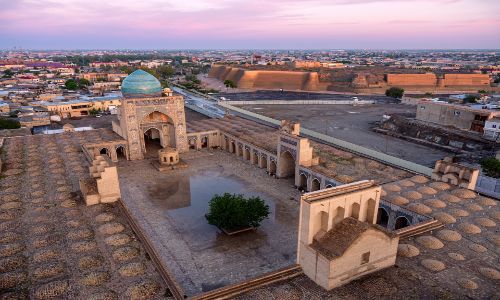
Uzbekistan has no access to the sea and compensates for this with a huge number of the world’s most beautiful lakes, natural and artificial reservoirs and large rivers that cover the entire Central Asia.
Uzbekistan has no access to the sea and makes up for this with a huge number of the world’s most beautiful lakes, natural and artificial reservoirs and large rivers that cover the entire Central Asia.
We offer you a variety of picturesque and attractive places in Uzbekistan for summer holidays, where you can relax and enjoy beautiful views of reservoirs, as well as go on a boat or yacht, sunbathe, swim or go fishing.



